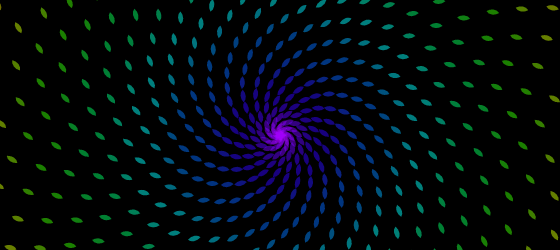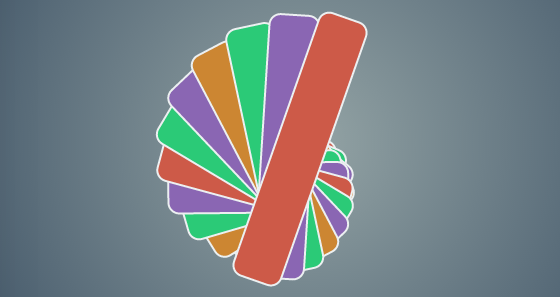文章
总述
SASS 的前世今生
Sass是是一种基于ruby编写的CSS预处理器,诞生于2007年,是最早也是最成熟的一款CSS预处理器语言,它可以使用变量、嵌套、混入、继承,运算,函数等功能,使得CSS的开发,变得简单清晰可维护,同时也大大节省了设计者的时间,提高了效率。Sass最后还是会编译出合法的CSS让浏览器使用,也就是说它本身的语法并不太容易让浏览器识别,因为它不是标准的CSS格式,在它的语法内部可以使用动态变量等,所以它更像一种极简单的动态语言。
其实现在的Sass已经有了两套语法规则:一个依旧是用缩进作为分隔符来区分代码块的;另一套规则和CSS一样采用了大括号({})作为分隔符。后一种语法规则又名SCSS,在Sass3之后的版本都支持这种语法规则。
sass虽然是最早的,但是一开始还是不太好用,而且使用缩进作为分隔符,不符合css使用大括号的习惯,所以less以后起之秀的身份轻松赢得了人心,后来sass借鉴于less的一些思想,改进了自己的设计,并有了scss,然后经过几个版本的更新,特别版本3.2.0做了些革命性的更新,以使它从其他几个编译处理器中脱颖而出。
由上面可见,有时太激进了,用户是不领情的,“步子走大了,容易...”,你懂的。不过现在类 sass 的写法还挺受欢迎的:HAML,Slim,CoffeeScript,jade,styleus等...
ㄟ( ̄▽ ̄ㄟ)
下面主要是自己在这段时间的使用中遇到的...
比较
calc
less 中使用 calc 有 bug,例如:
calc(100% - 8px);
他会无情的给你解析成 92%,而在 sass 中没有问题。上一个比较 撮 的 demo:click me
点击左下脚的 edit ,把 calc() 法 中写在行内的 style calc,写入 less 中,靠,他变成 92%了
循环
虽然都能实现循环,但是 sass 使用起来更方便,例如 sass 中循环 for ,很简单,也方便。
sass demo:

@for $i from 1 through $num {
$temp: $i / 2 + 0px;
.circle-#{$i} {
width: $temp;
transform: rotate($i*137.5deg);
&:after{
animation-duration: 10s;
animation-delay: 0.01s * $i;
}
}
}
less demo:

.loopingClass (@index,@father) when (@index =< @particles) {
//这里需要一个恶心的 mixin + 关键字 when 实现一个条件判断,有木有 =。= !
.father(@father) when (@father = demo1){
.@{father} i:nth-child(@{index}) {
@angle: @index / @particles * 360;
width: (@index * 14) + 0px;
height: (@index * 14) + 0px;
margin-top: -(@index * 14) / 2 + 0px;
margin-left: -(@index * 14) / 2 + 0px;
z-index: @particles - @index;
transform:rotate( @angle + 0deg );
transform-origin: 50% 50%;
animation-delay: @index * (2s / @particles);
}
}
.father(@father);
.loopingClass(@index + 1, @father);
}
条件判断
sass => if, less => when,下面两段代码,是 上面循环 一节中 less demo 的不同实现
sass:
@mixin paintChild($father) {
@for $i from 1 through $particles {
.#{$father} i:nth-child(#{$i}) {
@if $father == demo1 {
$angle: $i / $particles * 360;
width: ($i * 14) + px;
height: ($i * 14) + px;
margin-top: - ($i * 14) / 2 + px;
margin-left: - ($i * 14) / 2 + px;
z-index: $particles - $i;
transform:rotate( #{$angle}deg );
transform-origin: 50% 50%;
animation-delay: $i * (2s / $particles);
} @else if $father == demo2 {
... // your code
}
}
}
}
@include paintChild(demo1);
@include paintChild(demo2);
less:
.loopingClass (@index,@father) when (@index =< @particles) {
//这里需要一个恶心的 mixin + 关键字 when 实现一个条件判断,有木有 =。= !
.father(@father) when (@father = demo1){
.@{father} i:nth-child(@{index}) {
@angle: @index / @particles * 360;
width: (@index * 14) + 0px;
height: (@index * 14) + 0px;
margin-top: -(@index * 14) / 2 + 0px;
margin-left: -(@index * 14) / 2 + 0px;
z-index: @particles - @index;
transform:rotate( @angle + 0deg );
transform-origin: 50% 50%;
animation-delay: @index * (2s / @particles);
}
}
.father(@father) when (@father = demo2){
... // your code
}
.father(@father);
.loopingClass(@index + 1, @father);
}
.loopingClass (1, demo1);
.loopingClass (1, demo2);
less会重复写 .father(@father) when (... 有木有,另外,注意他们的单位计算方式,负号与后面有没有空格,与单位相加时怎么处理。
结语
萝卜白菜,各有所爱,不过还是觉的 sass 在某些方面比较方便,另外 chrome 中还可以直接调试。其次,也要看项目历史原因、团队偏好,为了易维护性以及项目的一致性,怎么选,你懂的。